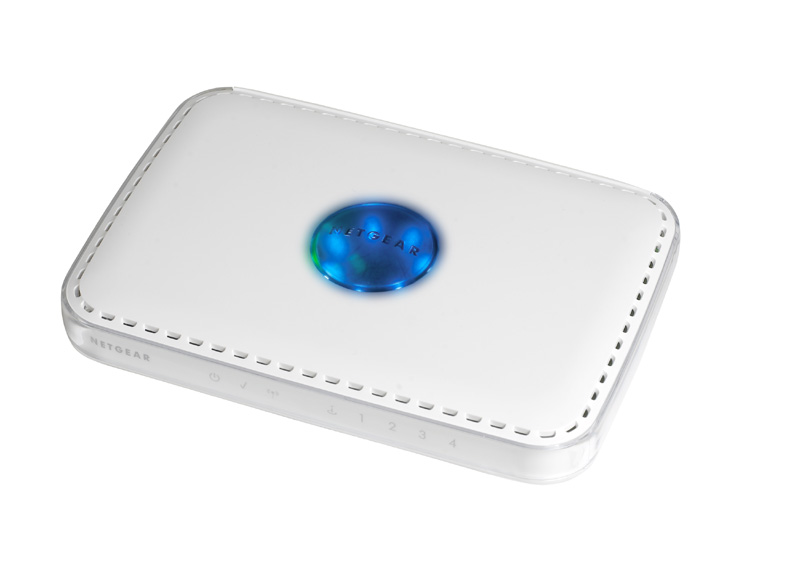Beamforming: The Best WiFi You’ve Never Seen
Can You Hear Me Now?
According to Ruckus, interference rejection can have an even more profound impact on performance than the target beam boosting. Imagine sitting in a crowded, noisy restaurant, and you’re trying to have a conversation with the person across the table. Everyone, including your partner, is talking at the same volume, and you’re having a very hard time hearing what the other person is saying. Seeing your listening problem, your partner talks a bit louder (boosting the signal a few dB), and this helps but nowhere near as much as when you cup your hands behind your ears to only let the “beam” of the other person’s voice reach you while simultaneously muting a lot of that interfering background chatter.
With BeamFlex, software can steer access point beams dynamically, selecting the best path for each packet. The system will also automatically assemble a list of the 10 to 20 most commonly used antenna patterns. This functions a bit like the cache on a processor, keeping oft-needed data very close to the execution pipeline so it can be accessed more quickly. Ruckus has spent five years developing BeamFlex into its current form and fine-tuning the algorithms that help comprise its special sauce. Yes, BeamFlex is proprietary in that it doesn’t adhere to IEEE 802.11n specs, but it’s plainly interoperable with any standard WiFi client, and I think, if proven superior over competing approaches, Ruckus’s approach to on-antenna beamforming could prove revolutionary in inspiring the next wave of wireless networking designs. We’ll see in the following pages how well BeamFlex holds up against the competition, particularly against Cisco’s chip-based beamforming option.
It's strange to say, but this may not be the first time you’ve run across BeamFlex. One of the very few times Ruckus ever poked its head into the mainstream press came in a roundup by Tom’s Hardware sister site, Tom’s Guide. This first-gen product had six antennas, each with about 60 degrees of coverage, arranged in a hexagonal design. You can still find this hexagonal layout in the company’s 7811 access point, which managing editor Chris Angelini discusses shortly.
Our main testing, though, focuses on the Ruckus ZoneFlex 7962 access point. This is the enterprise version of the same BeamFlex technology, here upgraded to 19 antenna elements—10 horizontally polarized and 9 vertically polarized. Interestingly, though, according to Ruckus, the 7811 should perform very similarly to the 7962 when deployed in a single-story environment when only a few clients are present.
By now, you’re probably wondering why, if beamforming is so amazing, Ruckus has kept such a low profile. The company says it’s because the retail market sucks. In early 2005, Ruckus (then called Video 54) teamed up with Netgear to produce the seven-antenna RangeMax 824 router, which became hugely successful. But retail margins are precariously thin after considering support and marketing costs, and for whatever reason the love affair soured, culminating in 2008 with Ruckus suing Netgear for patent infringement over the third version of the 824. For the time being, Ruckus is choosing to pursue the enterprise and service provider markets, although it still keeps one or two etailers in the loop for consumers like us who want to get in on the goodness.
Get Tom's Hardware's best news and in-depth reviews, straight to your inbox.
Current page: Can You Hear Me Now?
Prev Page Ruckus And On-Antenna Phased Arrays Next Page Test Gear: Ruckus 7962-
pirateboy just what we need, more retarded failnoobs clogging up the airwaves with useless braindead movieclips...yaayReply -
bucifer This article started up pretty good with lots of technical data and the beamforming technology in theory but after that the goodness stopped.Reply
1.You cannot compare two products by testing them with a in-house developed software. It's like testing ATI vs nVIDIA with nvidia made benchmark.
2.If you do something get it done, don't just go with half measures. I don't care if you didn't have time. You should have planned this from the beginning. The tests are incomplete, and the article is filled with crap of Rukus and Cisco. -
Mr_Man In defense of your wife, you didn't HAVE to use that particular channel to view all the "detail".Reply -
@Mr_Man: With a name like yours, I'd think that you'd sympathize with Chris a bit more :P Unless (Mr_Man == I likes men) :DReply
-
Pei-chen Both Tyra and Heidi have personal issues and would be pretty difficult friend/mate.Reply
The network idea sounds better. I couldn’t get my 10 feet g network to transmit a tenth as much as my wired network without it dropping.
-
zak_mckraken There's one question that I think was not covered by the article. Can a beamformaing AP can sustain the above numbers on two different clients? Let's say we take the UDP test at 5 GHz. The result shows 7.3 Mb/s. If we had two clients at opposite sides of the AP doing the same test, would we have 7.3 Mb/s for each test or would the bandwidth be sliced in 2?Reply
The numbers so far are astonishing, but are they realistic in a multi-client environnement? That's something I'd like to know!


